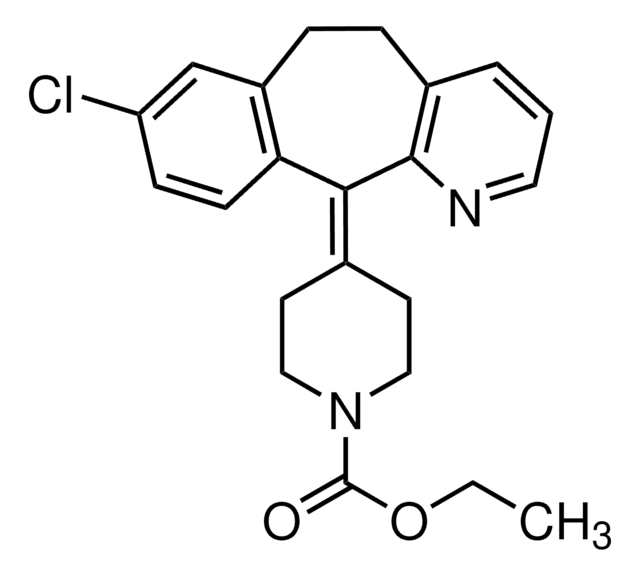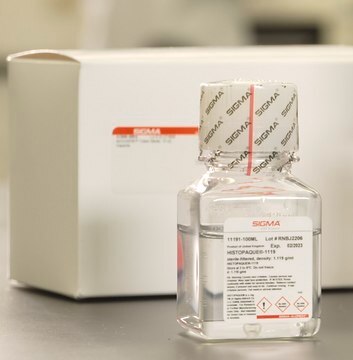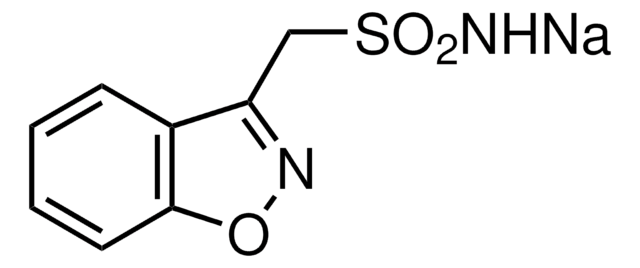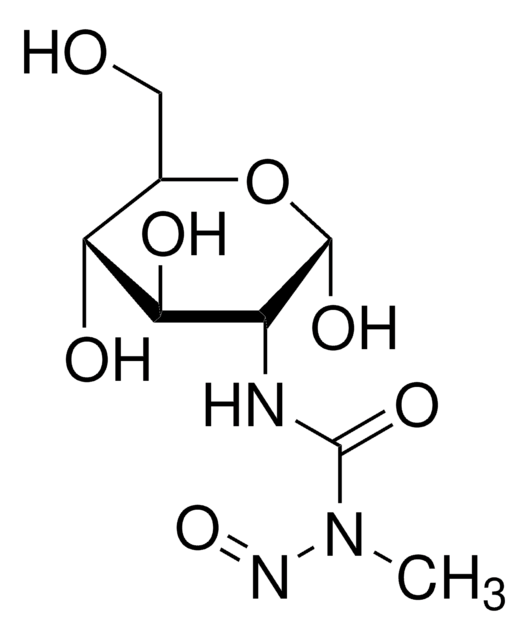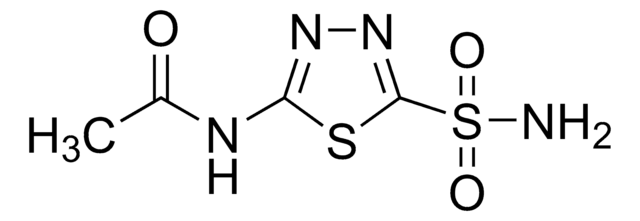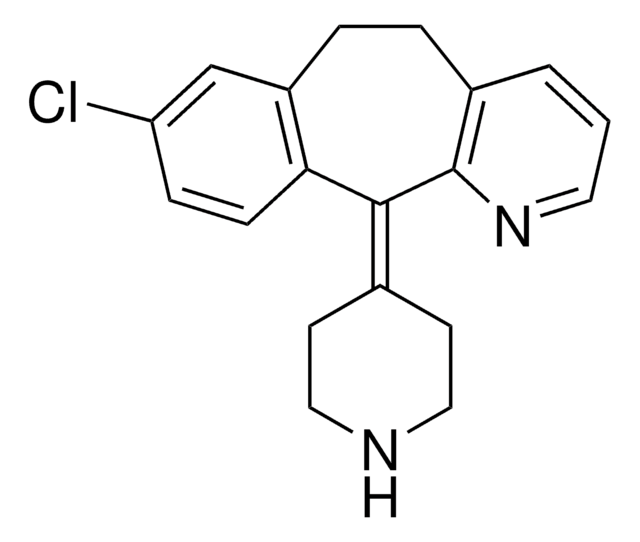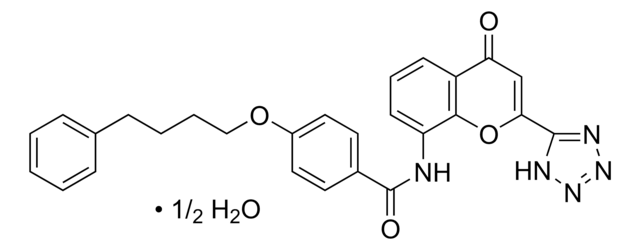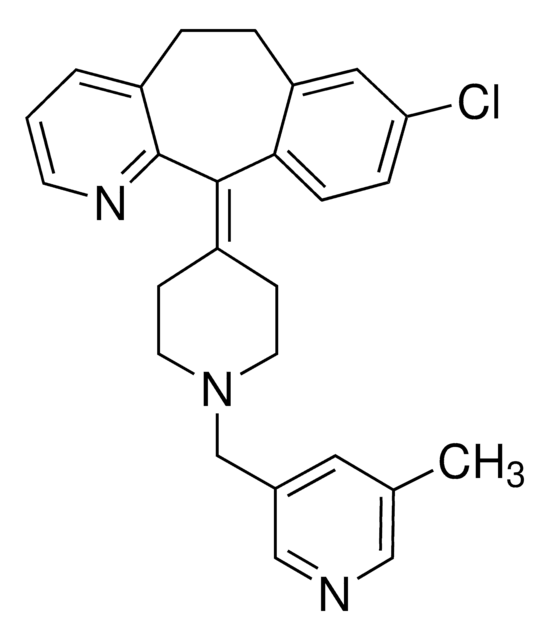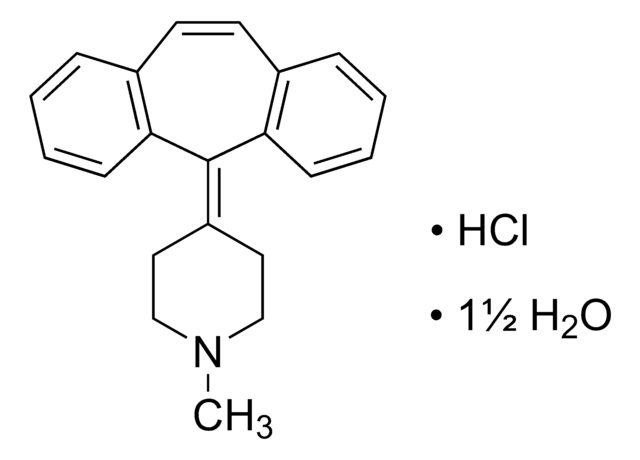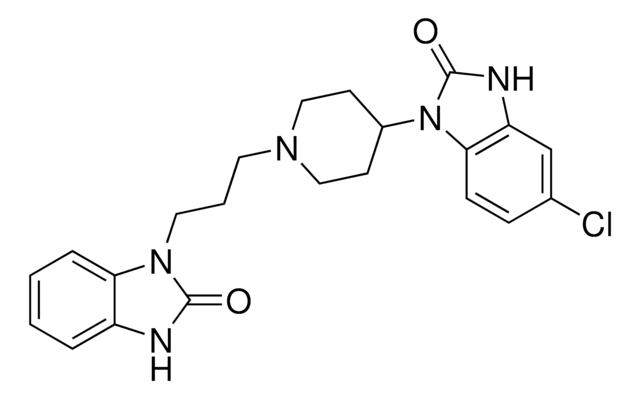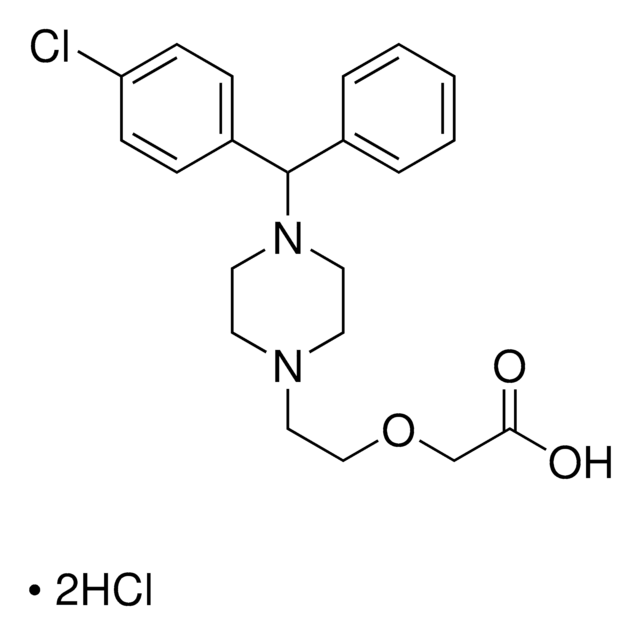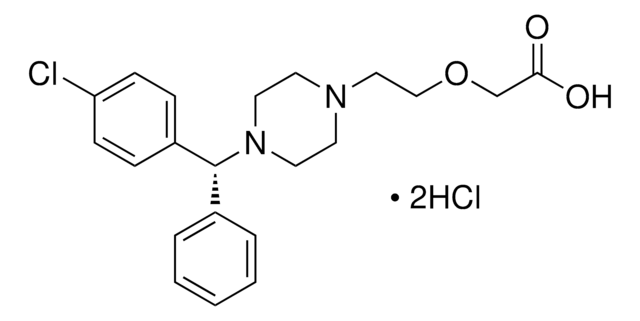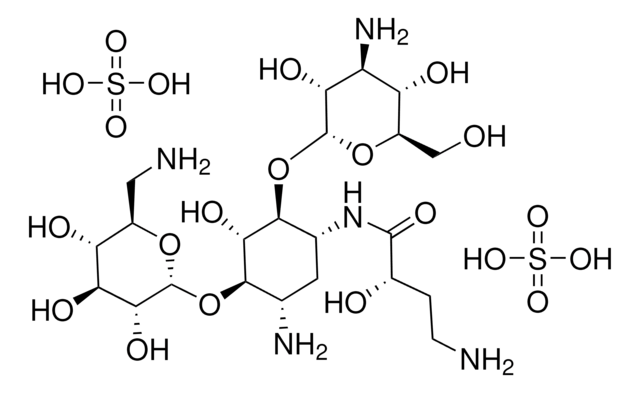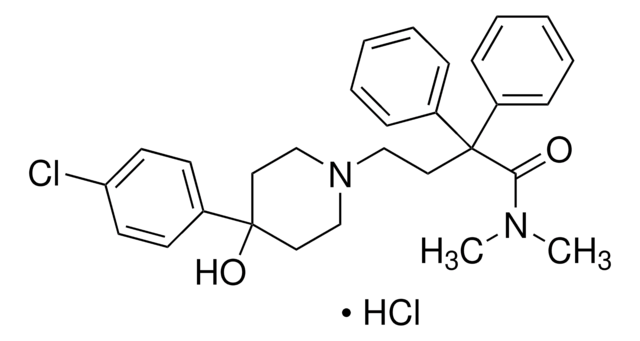L9664
Loratadin
≥98% (HPLC), powder
Synonym(e):
4-(8-Chlor-5,6-dihydro-11H-benzo[5,6]cyclohepta[1,2-b]pyridin-11-yliden-1-piperidincarbonsäure-ethylester
About This Item
Empfohlene Produkte
Qualitätsniveau
Assay
≥98% (HPLC)
Form
powder
Farbe
white
Löslichkeit
DMSO: soluble 50 mg/mL
H2O: insoluble
Ersteller
Schering Plough
Lagertemp.
2-8°C
SMILES String
CCOC(=O)N1CC\C(CC1)=C2/c3ccc(Cl)cc3CCc4cccnc24
InChI
1S/C22H23ClN2O2/c1-2-27-22(26)25-12-9-15(10-13-25)20-19-8-7-18(23)14-17(19)6-5-16-4-3-11-24-21(16)20/h3-4,7-8,11,14H,2,5-6,9-10,12-13H2,1H3
InChIKey
JCCNYMKQOSZNPW-UHFFFAOYSA-N
Angaben zum Gen
human ... CYP3A4(1576) , HRH1(3269) , KCNH1(3756) , KCNH2(3757) , PTAFR(5724)
rat ... Hrh1(24448)
Suchen Sie nach ähnlichen Produkten? Aufrufen Leitfaden zum Produktvergleich
Verwandte Kategorien
Biochem./physiol. Wirkung
Leistungsmerkmale und Vorteile
Ähnliches Produkt
WGK
WGK 2
Flammpunkt (°F)
Not applicable
Flammpunkt (°C)
Not applicable
Persönliche Schutzausrüstung
Eyeshields, Gloves, type N95 (US)
Analysenzertifikate (COA)
Suchen Sie nach Analysenzertifikate (COA), indem Sie die Lot-/Chargennummer des Produkts eingeben. Lot- und Chargennummern sind auf dem Produktetikett hinter den Wörtern ‘Lot’ oder ‘Batch’ (Lot oder Charge) zu finden.
Besitzen Sie dieses Produkt bereits?
In der Dokumentenbibliothek finden Sie die Dokumentation zu den Produkten, die Sie kürzlich erworben haben.
Kunden haben sich ebenfalls angesehen
Unser Team von Wissenschaftlern verfügt über Erfahrung in allen Forschungsbereichen einschließlich Life Science, Materialwissenschaften, chemischer Synthese, Chromatographie, Analytik und vielen mehr..
Setzen Sie sich mit dem technischen Dienst in Verbindung.
